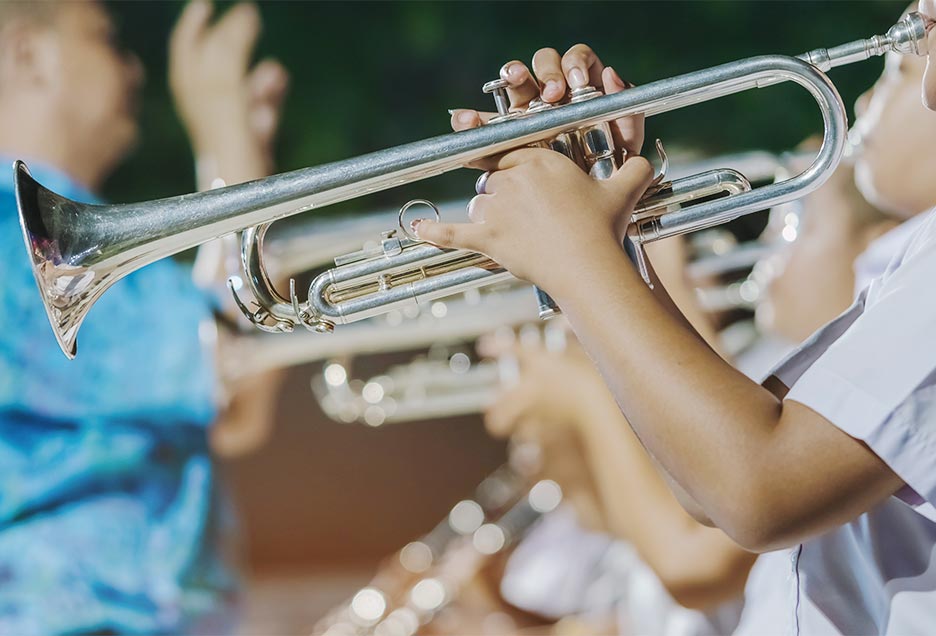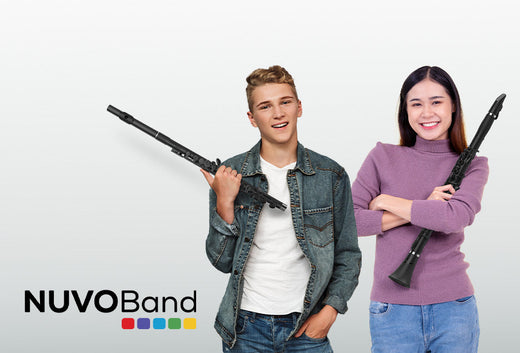This article was adapted from a resource written by Adam McCulloch from pBone, Five Ways Elementary Educators Use pInstruments in their Classrooms.
Schools and education hubs across the country - and around the world - are expanding their students’ music skills experience, allowing learners to experience and create music in new and exciting ways.
Choosing the right musical tools, ones which are durable, affordable, and provide good sound quality and playability, is crucial for teachers in planning their classroom activities and extra-curricular endeavours.
While the voice is clearly a fundamental tool, instruments help students understand tone, pitch, notes, rhythm, and other musical elements. The choice of instruments can significantly impact the learning experience.
Why add pInstruments to your curriculum?
For too long, primary music education has had an ‘empty space’. Movement and singing have been key in this area, along with a handful of instruments like recorders, various percussion items and more recently the ukulele.
But where is the brass?! Brass instrumental learning can help children understand some foundational musical skills and introduce them to more advanced concepts in simple ways. This includes learning to control and gain stamina in skills like using air (breath control), making a pitch through ‘buzzing’, and how notes and pitches work and can be represented. This is where pBone come in…
A brief history of pInstruments
The first pInstrument was the pBone, developed and manufactured in 2010, and unquestionably a significant milestone in the world of musical instruments, and particularly education. Designed by a team of UK-based musicians and engineers, this plastic trombone led the way for a series of high-quality, durable, and affordable pInstruments, trusted by scores of general music teachers.
The pBuzz, pBugle, pBone Mini, pCorder, pTrumpet, pCornet and pBone were developed to foster a love of music in younger students, giving them lightweight and accessible instruments to learn on at cheap prices and – crucially - of virtually unbreakable construction.
pBone suggests 5 key ways in which primary educators can use pInstruments in the classroom:
1. Exploring musical choices
Primary classrooms are often the first place where children get to explore different types of music and instruments. Traditionally, this has included keyboards, percussion, and recorders. But brass instruments? Not so much. That's where pInstruments come in. pTrumpet and pBone have given young students the chance to try their hand at brass instruments for the first time, while pBuzz has been used in group activities to create and craft those first musical moments. Not only do these instruments fit neatly into the existing music curriculum, they also offer a high-quality sound that can rival their traditional brass counterparts. This means students aren't simply making noise; they're making music. And when kids realize they can produce a great sound, it boosts their confidence and encourages them to explore further.
2. Learning to use air
Learning proper breath control is a fundamental skill in music performance, and it's often overlooked in early education. pInstruments offer a unique way to teach this skill right from the get-go. Students learn how to control their air and develop endurance, which is essential for playing any wind instrument, and even for singing. Many a brass player has also developed into an excellent vocalist.
This isn't just about blowing air into an instrument; it's about learning the correct technique, setting the stage for future musical success. The quality of pInstruments plays a crucial role here. Their design allows for easy airflow, making it simpler for kids to get the hang of it. This very practical skill carries over into other areas like singing, dance, theatre, public speaking and even athletics.
3. Fostering creativity
Kids love to experiment... and pInstruments give them the freedom to do just that. These are authentic instruments that allow students to control pitch and create melodies just as their metallic equivalents do. This hands-on experience is invaluable for developing musical intuition and creativity. As ensemble instruments, pInstruments enable peer-to-peer learning, engage aural, visual and kinaesthetic learning styles, and provide a safe space for creating their own musical experiences.
Students can experiment and play, knowing that the instrument will deliver consistent, high-quality sound. This reliability encourages more exploration and helps students push their creative boundaries. Students feel like their creative work is genuine, played on authentic instruments. The quality of these instruments ensures that this creative freedom doesn't come at the expense of sound quality.
4. A real feel for playing together
pInstruments offer a practical way for students to find out. Younger students can SEE what it’s like and can LISTEN and FEEL what it’s like. Unlike other introductory methods, which might only allow a quick tryout of various instruments, pInstruments let students actually play and practice, without the weight, awkwardness and fear of breaking an expensive piece of equipment.
The durability and affordability of pInstruments make them ideal for classroom use. Teachers can let students explore without constantly worrying about potential damage. This freedom to explore, coupled with great sound and durability, provides a more authentic and enjoyable ensemble experience.
5. The new age of primary music ‘bands’
The concept of primary school music ensembles isn't new, but the introduction of pInstruments makes adds a new dimension. Whether it's a traditional band, a smaller ensemble, or even a rock or jazz band, these instruments open up various possibilities.
The pBone resources collection
pBone provide a great variety of resources to help educators use their instruments as effectively as possible in the primary classroom. These include:
General primary music resources: explaining how to start off using pInstruments - including the pBuzz and pCorder – using them as the foundation for musical growth.
pBuzz resources: a concise video series walking you through exactly how to teach the basics of brass playing.
Mariachi classroom: Introducing the music of Mariachi to your school, featuring demonstration videos by professional trumpeter Ramon Rivera… on his beloved pTrumpet!
Modern band resources: showcasing various awesome potential uses of pInstruments!
Setting a new standard
Throughout the world, pInstruments are making a real difference in the lives of children. Their quality, durability, and versatility are revolutionizing the way music is taught and experienced in elementary classrooms. By offering high-quality sound and a range of educational benefits, pInstruments are not just enriching the music curriculum; they're setting a new standard for music education.
For more information about pInstruments, visit the pBone website.










